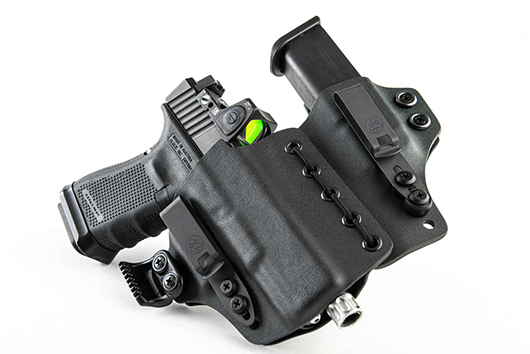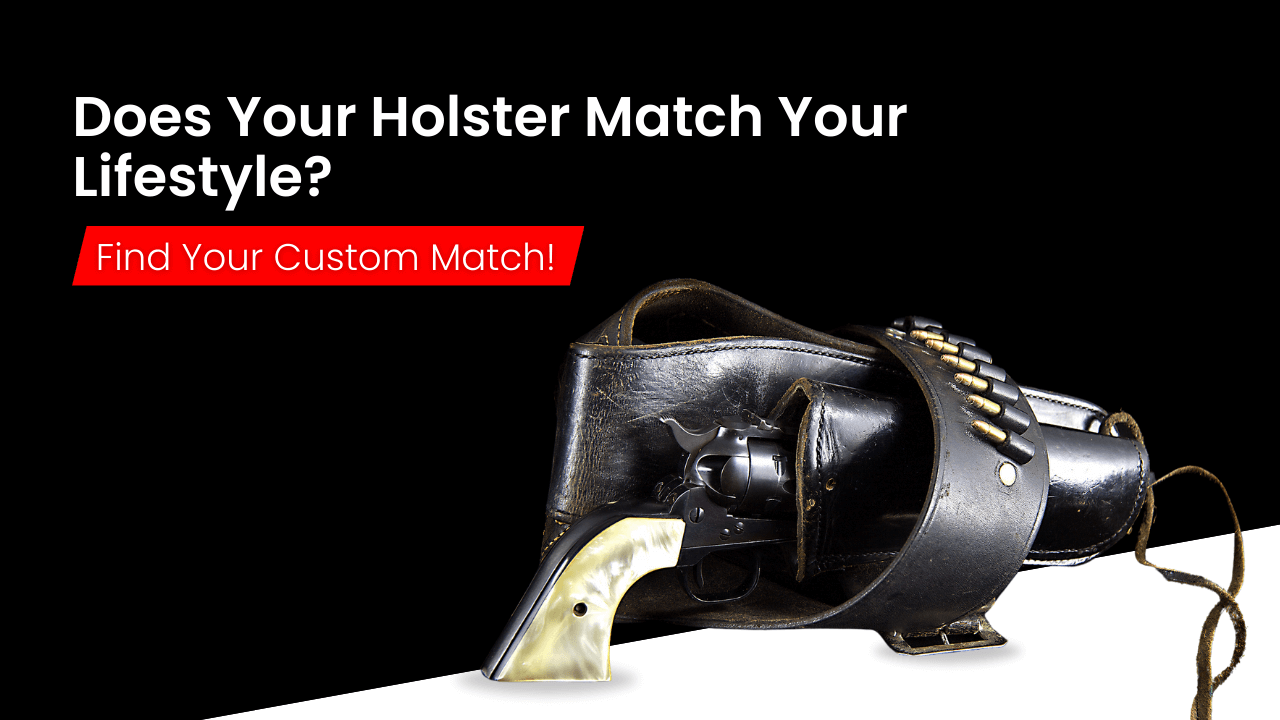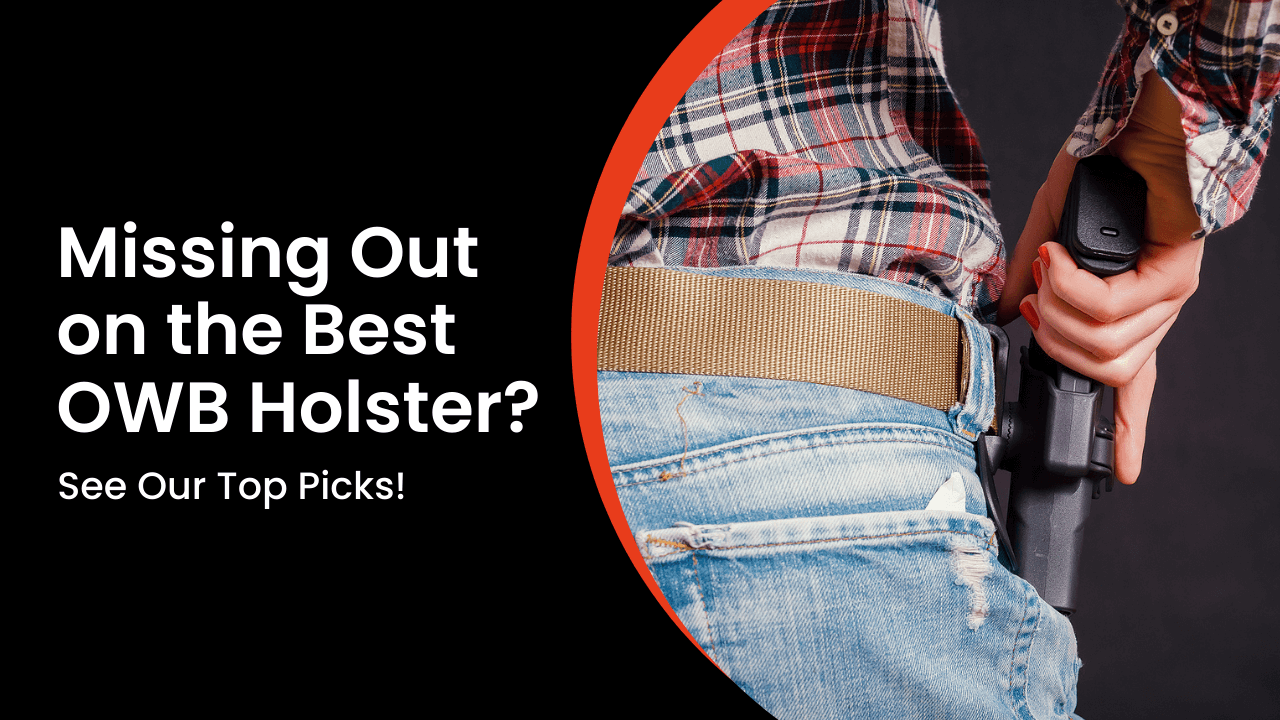Five Tips for Being Better at Appendix Carry
Aug 7th 2021

Appendix carry is one of the most popular concealed carry methods. Fans of this method often cite its comfort and concealability compared with more traditional ways to carry concealed, emphasizing the ease of access and draw speed.
Many people in the concealed carrying community find appendix carry appealing but may not necessarily know the best or safest way to do so. If you are among these people, follow these tips and tricks to carry AIWB like a pro.
Adjust Your Ride Height as Needed
One of the main advantages of appendix inside the waistband carry (AIWB) is the improved concealment compared to traditional, strong-side, hip-carried IWB holsters. However, all your efforts in choosing a good AIWB holster are for nothing if you don’t spend the time adjusting ride height correctly.
Most appendix carry holsters are Kydex holsters with height adjustment features. However, most people new to carrying appendix make the mistake of setting their ride height too low, believing that it will improve concealment. In reality, all this does is make drawing unnecessarily challenging.
When setting your ride height, your gun should present just high enough to let you get a proper, full grip without having to adjust your pants or shift your body position. As long as you do your due diligence with ride height, a good AIWB holster lets you conceal even a full-size handgun.
Use a Mod Wing
A mod wing, also known as a claw, is a small accessory that you can install on your AIWB holster. The purpose of a mod wing is to keep your gun from printing under your cover garments. Most good holster makers produce a claw for their holsters.
Unmodified AIWB holsters may cause the grip of your handgun to stick out, causing you to print. Mod wings function by physically pushing your waistline at the belt level, creating leverage that brings the grip closer to your body.
Some manufacturers offer wings with different heights, allowing you to adjust the amount of leverage applied and strike a balance between drawing speed and concealment.

Take Advantage of a Reverse Cant
If you’re familiar with the way concealment holsters function, you know that cant adjustment can be essential to providing additional concealment and comfort. In traditional IWB holsters, you typically see forward cant on holsters placed behind the hip bone, in the FBI carry position (4 to 5 o’clock).
AIWB carriers seeking to improve comfort should consider a reverse cant instead. In the appendix carry position, not only does the orientation of your grip matter a lot for concealment, but the length of your barrel also has a significant impact on comfort. Long-barreled handguns tend to poke into the wearer’s thighs.
Using a reverse cant may help orient your gun in a more comfortable position, especially if you need to sit down often. Typical cant angles for AIWB carry range from 5° to 15° depending on the shape of your body and your personal preferences.
Experiment and adjust as needed, testing your configuration in various positions (sitting, standing, in the car, bending down, etc.) until you find what works best for you.
Adjust Your Pants and Belt Buckle
Most people wear their belts with the buckle in the 12 o’clock position, in which the buckle points directly in front of the wearer’s body. However, appendix carry is, by nature, a carry position that places the holster in front of your body.
If you’ve ever found yourself trying to wear an AIWB holster with your belt buckle oriented in the usual position, you may have found that it adds unnecessary bulk over your waistline. In turn, this bulge creates a lot of printing, making it obvious that you’re carrying a firearm and defeating the point of appendix carry.
Rotating your belt allows the buckle to ride on the side. This relatively simple adjustment may alleviate the printing issue and even help make it a little more comfortable to carry your gun. If you still find yourself with comfort issues, consider wearing one pant size higher than usual.
Try a Wedge
One of the more unusual accessories you can use in conjunction with your AIWB holster is the foam wedge.
As any firearms instructor will tell you, one of the essential rules of gun safety is to avoid pointing the muzzle at anything you don’t wish to destroy. AIWB carry makes this relatively challenging, as unmodified appendix carry holsters tend to point your gun’s muzzle at your own body.
Although simple in its construction, the foam wedge’s purpose is to change the holster shell’s angle, causing the muzzle to point away from the wearer’s body. A wedge offers two advantages: it prevents you from pointing the muzzle at yourself when your pistol is holstered, and it improves comfort.
The best thing about wedges is that they are inexpensive. Most manufacturers offer wedge packs in different sizes, costing no more than $15. If you’re into DIY solutions, it’s entirely possible to make your own. All you need is a piece of foam or neoprene (or a gel shoe insert), a hook-and-loop panel, a pair of scissors, and your existing holster.
Carry Confidently and Comfortably With Incognito Concealment
Incognito Concealment is a Michigan-based manufacturer of IWB and OWB Kydex holsters, 100% hand-crafted in the United States. We offer a large selection of models compatible with the most popular pistols and revolvers on the market. If you can’t find your model in our catalog, contact us at (586) 999-5820 for a custom solution.











